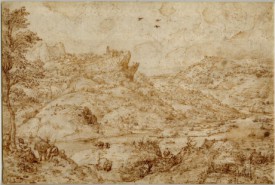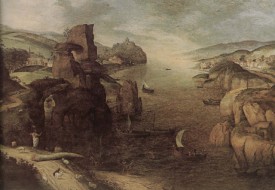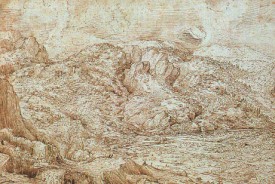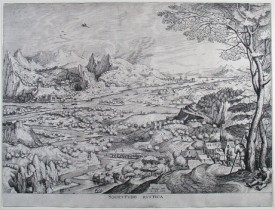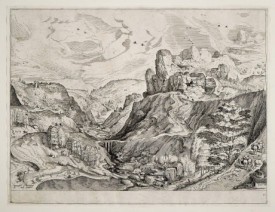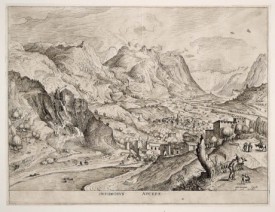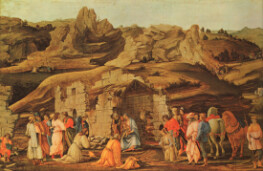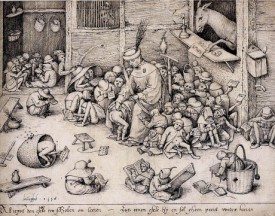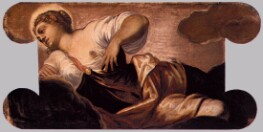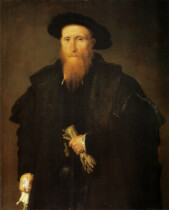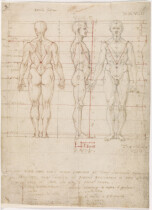The Harvesters (July–August)
The Harvesters is one of five surviving paintings from a probable group of six, a series commissioned from Bruegel by the wealthy Antwerp merchant Niclaes Jongelinck, apparently as an extensive decorative scheme for the dining room of his suburban home, Ter Beken. The four other paintings of the group are the Gloomy Day, Hunters in the Snow, and the Return of the Herd (all Kunsthistorisches Museum, Vienna), and Haymaking (Lobkowicz Collections, Prague).
Although "16 pieces" by the artist are listed in Jongelinck's 1566 inventory, only two independent works and the Twelff maenden (twelve months) are mentioned by name, suggesting that the series may originally have included twelve paintings. By 1595, however, when the panels were purchased by the city of Antwerp and presented as a gift to Archduke Ernst, they are described as six paintings representing the twelve months. Although the original number of panels remains an open question, most scholars now believe there were only six panels, as scenes that would traditionally have appeared in two separate months in contemporary Calendar series (a theme common in illuminated manuscripts) are included in a single image. This panel is usually identified as representing July–August, or late summer.
Bruegel's drawing Spring (Albertina, Vienna) is inscribed by the artist "De Lenten Meert April Meij," and may resemble in subject the missing panel of the months that presumably represented April-May or early spring.

